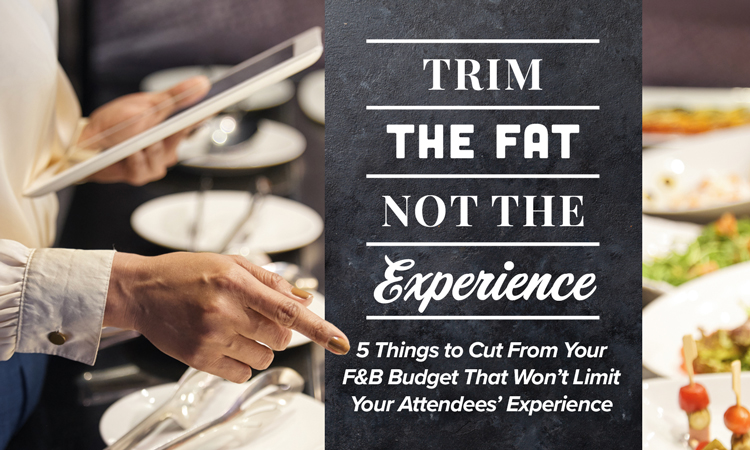Creator of digital platform meetingpages complete event planning directory and resource delivering leads and national, regional and local exposure for event venues, suppliers and destinations in MN, WI, IA & CO markets. In her free time, this 19 year industry veteran enjoys dance, group fitness, and training her young golden retriever dog in competition obedience and confirmation.
Trim the Fat, Not the Experience - 5 Things to Cut From Your F&B Budget That Won't Limit Your Attend
When planning an event, the food and beverage (F&B) budget can be one of the most challenging aspects to manage. You want to provide a satisfying and memorable experience for your attendees, but you also need to keep your costs under control. How can you balance these competing priorities without compromising on quality or variety? Here are five things you can eliminate from your F&B budget that won't limit your attendees' experience:
1. Pre-packaged snacks. Instead of offering individual bags of chips, cookies, or candy, opt for bulk items that you can serve in bowls or platters. This will reduce waste, packaging, and transportation costs, as well as allow you to offer more diverse and healthy options, such as nuts, dried fruits, granola bars, or popcorn.
2. Bottled water. Rather than providing bottled water for your attendees, invest in reusable water bottles that you can fill with tap water or filtered water stations. This will not only save money, but also reduce plastic waste and environmental impact. You can also customize the water bottles with your event logo or sponsor name, which will increase brand awareness and engagement.
3. Alcohol. While some events may require or benefit from serving alcohol, many others can do without it. Alcohol can increase your F&B budget significantly, as well as create potential liability and safety issues. If you decide to serve alcohol, consider limiting the amount or the duration of the service, or offering a cash bar instead of an open bar.
4. Full meals. Depending on the type and length of your event, you may not need to provide full meals for your attendees. Instead of serving breakfast, lunch, and dinner, you can offer lighter options, such as continental breakfast, boxed lunch, or appetizers. This will reduce your food costs and preparation time, as well as give your attendees more flexibility and choice.
5. Excessive variety. While it is important to cater to different dietary preferences and restrictions, you don't need to offer too many options that will confuse or overwhelm your attendees. Instead of having multiple stations or menus for different cuisines or diets, focus on a few core items that are versatile and appealing to most people. You can also use surveys or registration forms to collect information about your attendees' preferences and needs and plan your menu accordingly.










